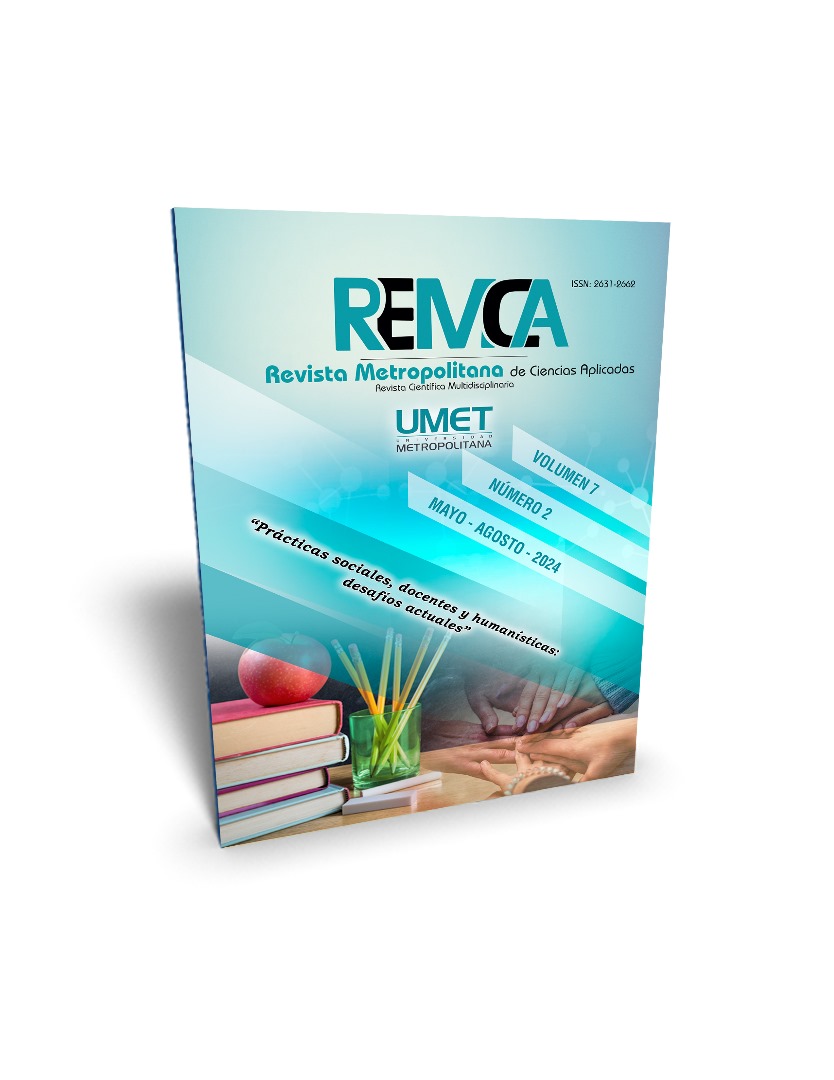The usage of Duolingo when teaching English vocabulary to fifth-gradetudents at Unidad Educativa Rumiñahui
DOI:
https://doi.org/10.62452/tpsvyg17Keywords:
English vocabulary, usage, teachingAbstract
Learning English can be challenging for students in rural areas due to limited access to educational resources. Technology has emerged as a solution to this problem, providing students with easy access to English language learning tools such as Duolingo, which can be downloaded on any device. This app can help students improve their English vocabulary and overall learning process. The aim of this study is to explore how useful Duolingo is in teaching English vocabulary as a foreign language to fifth-grade students at Unidad Educativa ‘‘Rumiñahui’’. An explanatory mixed method design was established by using a pre-test vocabulary and a structured interview with a convenience sample of learners based on their availability. Furthermore, the results obtained from the interviews were assembled using triangulation and discourse analysis, and then combined with the data gathered through the pre-test since this instrument greatly helped to classify the most relevant information for each aspect, as noted by Sayago (2014). Indeed, the data collected has been evidently positive since learners showed how practical and beneficial would the idea to use Duolingo be when they learn English.
Downloads
References
Ahmadi, D. M. (2018). The use of technology in English language learning: A literature review. International journal of research in English education, 3(2), 115-125. https://ijreeonline.com/article-1-120-en.html
Ajisoko, P. (2020). The Use of Duolingo Apps to Improve English Vocabulary Learning. International Journal of Emerging Technologies in Learning (iJET), 15(07), 149–155. https://doi.org/10.3991/ijet.v15i07.13229
Ansah, G. N. (2021). Cognition and Language Learning. Newcastle-upon-Tyne: Cambridge Scholars Publishing, 2020. Pp xiv + 157, including tables, references and appendix. ISBN 978-1-5275-4482-6. Language and Cognition, 13(1), 154–159.
Collie, R.J., & Martin, A.J. (2019). Motivation and engagement in learning. In Oxford Research Encyclopedia of Education. Oxford University Press.
Gusano, C. (2017). 5 Advantages of Learning a New Language with An App. Babbel Magazine. https://www.babbel.com/en/magazine/5-advantages-of-learning-a-new-language-with-an-app
Hazaymeh, W. (2020). The Impact of Integrating Digital Technologies with Learners’ Multiple Intelligences to Facilitate Learning English as a Foreign Language. Asian EFL Journal, 27, 182-212. https://www.asian-efl-journal.com/monthly-editions-new/2020-monthly-editions/volume-27-issue-4-1-october-2020/index.htm
Huda, M., Janattaka, N., & Prayoga, N. (2023). Exploring the use of online resources for english language learning: students' perspectives. English Journal Literacy Utama. 8. 794-802. https://ejl.widyatama.ac.id/index.php/ejlutama/article/view/231
Krashen, S. (1982). Principles and Practice in Second Language Acquisition. Pergamon Press
MacNealy, M. S. (1999). Strategies for empirical research in writing. Addison Wesley.
Motteram, G. (2013). The Benefits of New Technology in Language Learning. British
Nolen, J. (2008). Multiple Intelligences in the classroom. Semantic scholar. https://openurl.ebsco.com/EPDB%3Agcd%3A10%3A16343706/detailv2?sid=ebsco%3Aplink%3Ascholar&id=ebsco%3Agcd%3A11047099&crl=c
Ormerod, R. (2006). The history and ideas of pragmatism. Journal of the Operational Research Society, 57, 892-909. https://link.springer.com/article/10.1057/palgrave.jors.2602065
Rafiqa, R. (2020). The English vocabulary acquisition. Journal of English Education and Development, 1(1), 18-34. https://www.researchgate.net/publication/340162141_The_English_Vocabulary_Acquisition
Sayago, S. (2014). El análisis del discurso como técnica de investigación cualitativa y cuantitativa en las ciencias sociales. Cinta moebio, 49. https://www.moebio.uchile.cl/49/sayago.html
Seidman, I. (2006). Interviewing as qualitative research: a guide for researchers in education and the social sciences. College Press.
Sorádová, D. (2018). Strategies for teaching English spelling and reading. Issues in early education, 1(40). https://www.ceeol.com/search/article-detail?id=689930
Wilkins, D. A. (1972). Linguistics in Language Teaching. MFT Press.
Downloads
Published
Issue
Section
License
Copyright (c) 2024 Leslie Micaela Perez-Reyes, Martha Magdalena Guamán-Luna (Autor/a)

This work is licensed under a Creative Commons Attribution-NonCommercial-ShareAlike 4.0 International License.
Authors who publish in Revista Metropolitana de Ciencias Aplicadas (REMCA), agree to the following terms:
1. Copyright
Authors retain unrestricted copyright to their work. Authors grant the journal the right of first publication. To this end, they assign the journal non-exclusive exploitation rights (reproduction, distribution, public communication, and transformation). Authors may enter into additional agreements for the non-exclusive distribution of the version of the work published in the journal, provided that acknowledgment of its initial publication in this journal is given.
© The authors.
2. License
The articles are published in the journal under the Creative Commons Attribution-NonCommercial-ShareAlike 4.0 International License (CC BY-NC-SA 4.0). The terms can be found at: https://creativecommons.org/licenses/by-nc-sa/4.0/deed.en
This license allows:
- Sharing: Copying and redistributing the material in any medium or format.
- Adapting: Remixing, transforming, and building upon the material.
Under the following terms:
- Attribution: You must give appropriate credit, provide a link to the license, and indicate if any changes were made. You may do this in any reasonable manner, but not in any way that suggests the licensor endorses or sponsors your use.
- NonCommercial: You may not use the material for commercial purposes.
- ShareAlike: If you remix, transform, or build upon the material, you must distribute your creation under the same license as the original work.
There are no additional restrictions. You may not apply legal terms or technological measures that legally restrict others from doing anything the license permits.




